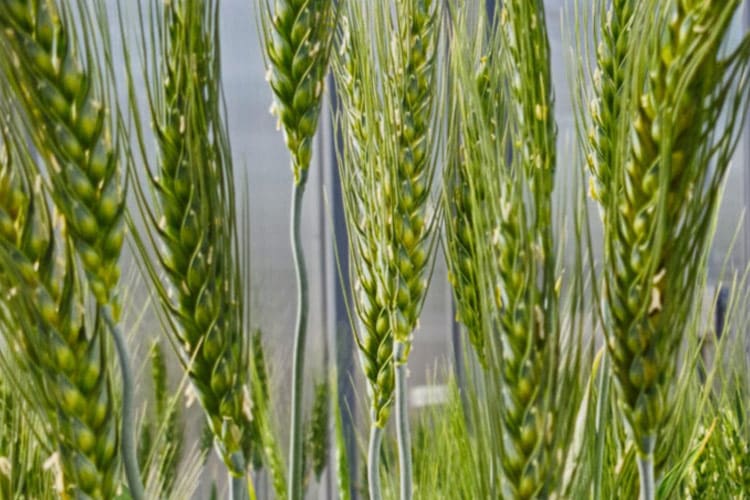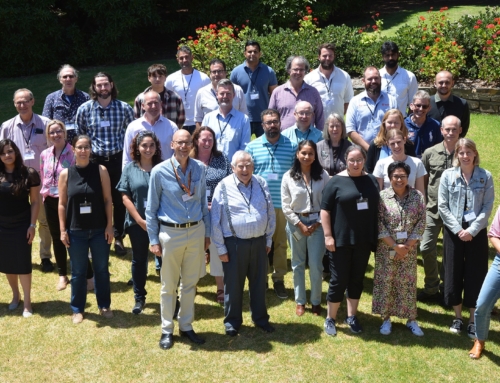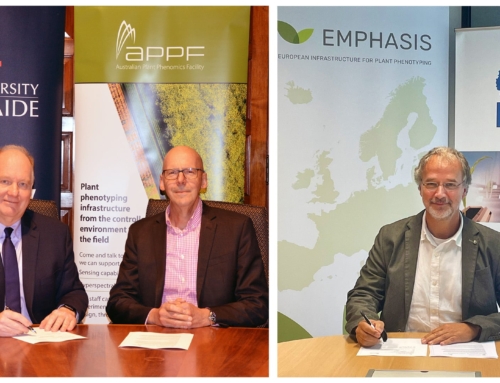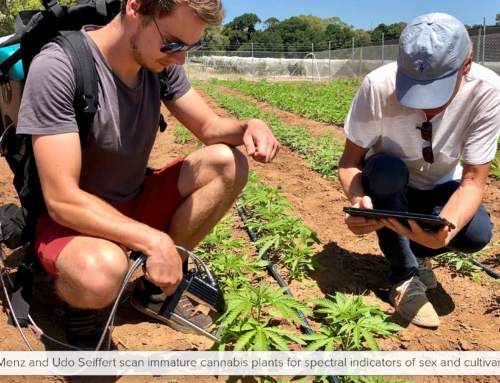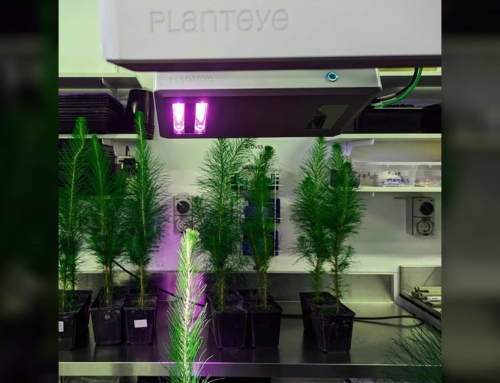A team of scientists, including the Australian Plant Phenomics Facility’s Dr Bettina Berger, have identified a number of novel beneficial genetic loci (so-called quantitative trait loci or QTL) that associated with higher grain yield in a bread wheat population.
High soil salinity is a significant problem for agriculture, especially in Australia as soil salinity can lead to reduced germination and growth rates, premature leaf death and decreased grain yields.
Using a combination of high-throughput, non-destructive imaging, leaf sodium and potassium measurements and QTL analysis, the researchers examined six QTL that correlated with salinity tolerance, including shoot growth maintenance, leaf Na+ exclusion, and leaf K+ accumulation in a bread wheat population.
“We found several beneficial alleles for salinity tolerance from our greenhouse work which we showed that they had a positive impact on yield in different field trials, over several years at several locations. Additionally, molecular markers linked to these alleles are being used to introduce them into elite Australian wheat germplasm for further field evaluation.” said Associate Professor Stuart Roy from the Australian Centre for Plant Functional Genomics (ACPFG) – The University of Adelaide, co-author of the study.
The high-throughput, non-destructive measurements of plant growth using a LemnaTec Scanalyser 3D were carried out at the APPF’s Adelaide node in one of the fully automated, temperature controlled Smarthouses.
Another important finding to mention here is that this project is the “first published article about the shoot ion-independent tolerance QTL in bread wheat”, according to Dr. Muhammad Ahsan Asif from the ACPFG, co-author of the study.
In recent years, the genetic variations that correlated with salt-tolerance mechanisms in shoots (including shoot ion-independent tolerance) of different plants (such as rice, chickpea, bread wheat, etc.) have gained increasing interest. However, pin-pointing the genes for salt tolerance mechanisms apart from those related to Na+ and K+ has been difficult.
“Our project used the latest International Wheat Genome Sequencing Consortium (IWGSC) sequencing data to shortlist the potential candidate genes”, says Dr. Rhiannon Schilling from School of Agriculture, Food and Wine – The University of Adelaide, co-author of the study. The genetic map generated for the bread wheat population from an Excalibur x Kukri cross will now become available to other researchers.
Possibly the most important aspect of this research is that the experimental results from the greenhouse were translated to the field. The results of this study and work underway in crossing the identified alleles into elite germplasm have the potential to make a real-life impact in increasing the salinity tolerance of Australian bread wheat varieties.
Read the full paper “Mapping of novel salt tolerance QTL in an Excalibur × Kukri doubled haploid wheat population“.
Article by Amy (Thu) Ngoc Anh Doan, Applied Biology student, The University of Adelaide


